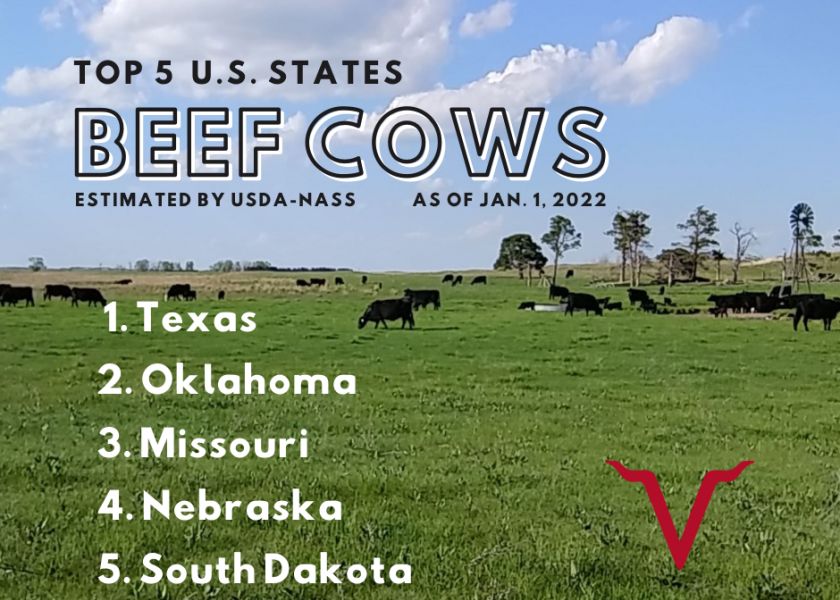What I Want in the Perfect Beef Cow

Written by Ryon Walker, Livestock Consultant, Noble Research Institute, LLC
Back in the early 1990s, headlines generated some interest in developing a “green cow.” This green cow was supposed to produce (synthesize) its own food, just like our green forages. I believe it had something to do with photosynthesis, using sunlight as energy. Theoretically, that would have significantly contributed to making the perfect cow: low input with high output. So, did science fail because there is no such thing as a green cow?
To the contrary. Science has helped us understand how to identify best management practices that allow us to produce an efficient, sustainable product. However, management is only part of the equation. The animal and the environment are the other parts. We can manage only as well as the cow and her offspring will allow us to. If we can produce a “perfect cow,” then we can more easily manage that cow.
We can manage only as well as the cow and her offspring will allow us to. If we can produce a “perfect cow,” then we can more easily manage that cow.
So what should the perfect cow look like?
What a perfect beef cow looks like phenotypically depends on the eye of the beholder, but what she is capable of should result in the same goals. The perfect cow can possess all the traits you are looking for through genetic selection, phenotypic evaluation, management and production measurements.
Fair enough?
Not only do I want the perfect cow to possess certain traits, but I think some traits are more important than others. Here is how I rank these traits based on importance, as a percentage.
RYON WALKER’S TOP PREFERRED TRAITS IN A BEEF COW

ONE: ENVIRONMENT
Fit her environment. (35%)
How the cow fits with her environment is the most important trait for me. This means she will deliver a healthy calf every year and maintain her body condition throughout the year as she accomplishes that. She will be more efficient at forage utilization because she likely has a lower intake, can metabolize and prioritize nutrients more efficiently. If a cow cannot maintain a body condition score (BCS) 5 throughout the year, this can have negative impacts on fertility, milk production and health.
TWO: FERTILITY
Must calve every 365 days, no exceptions. (25%)
In my mind, fertility is one of the most important traits in a female. However, if the cow does not fit her environment, she won’t survive. Because of this, I rank it second. From an economic standpoint, however, fertility ranks the highest.
To deliver a healthy calf every year, the cow must calve by 24 months of age (in non- or low-percentage Brahman crosses).
Age and weight at puberty are moderately to highly heritable traits. By selecting for these traits in your replacement heifers, you increase their chances of reaching their target calving dates.
This cow must calve every 365 days. No exceptions.
The average gestation period for a cow is approximately 283 days. Based on what we know, if a cow calves in adequate body condition (BCS 5-6), she needs 60 to 75 days after calving to begin cycling again and have an opportunity to become pregnant naturally.
To meet that goal, she needs to conceive within the first 30 days of the breeding season and calve in the first 30 days of the calving season. If she calves at a lower body condition, her recovery period after calving is longer, reducing the likelihood of her conceiving early in the breeding season.
THREE: EFFENCIENCY
Be efficient throughout her production cycle. (15%)
This can be defined in many ways: as a single trait (reproductive, forage, what she produces, etc.) or she can be efficient in every stage of production. I want a cow that can be efficient in all of the traits listed above and throughout her production cycle. I am looking for a cow that can:
- Wean a calf greater than or equal to my average weaning weight.
- Be moderately framed and weigh less than or equal to 1,300 pounds.
- Maintain a BCS of a 5 (± 0.5) throughout the year.
Remember, management and environment make up two-thirds of the equation. The cow is the other one-third.
FOUR: PRODUCTION
Provide the nutrient resources for her offspring to reach their genetic potential. (15%)
If the cow fits her environment and calves when she needs to, that calf is likely your biggest source of income. The cow must provide sufficient resources for the calf to reach its genetic potential. This not only includes the genetic potential for this calf to grow, but also the mother’s nutrient resources available during lactation and the conversion of feed and forage resources (other than from its mother) to protein prior to weaning. Major factors that can impact the genetic potential of a calf are:
- Length of calving season.
- Mother’s milk production.
- Forage resources.
- Environmental conditions.
- Health.
FIVE: DISPOSITION
Must not be crazy. (10%)
A cow’s disposition is becoming more important as we find ourselves not having the time to deal with poorly dispositioned cattle. Because the average herd size in the U.S. is approximately 40 head, many beef producers have a full-time job outside of raising cattle. So, my cow must not be crazy. Research has shown us that poor disposition in cattle causes stress, resulting in increased risk for reductions in fertility and animal performance as well as higher susceptibility to sickness and disease. So, cull based on disposition. We do!







